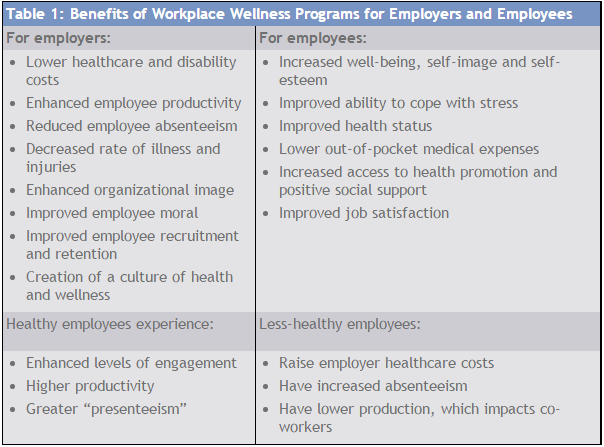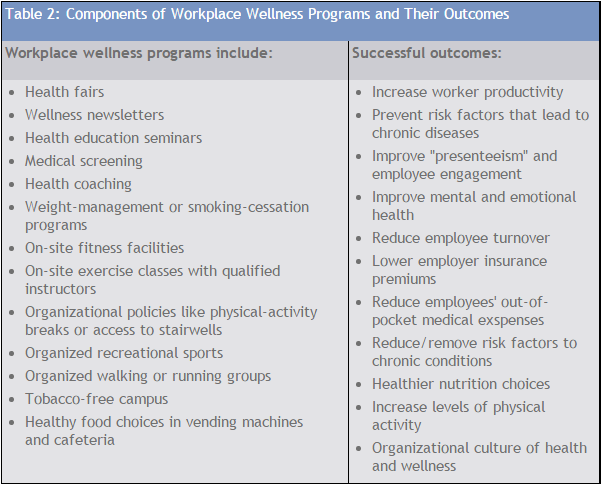
By the Numbers: Rising Healthcare Costs
The Employer Health Benefits 2014 Summary of Benefits report produced by the Kaiser Family Foundation estimates that employer-sponsored insurance provides coverage to approximately 149 million non-elderly adults. The Kaiser report found that in the decade from 2004 to 2014, average premiums for employer-sponsored healthcare plans increased by 81 percent (to $4,800) for single coverage and by 70 percent (to $12,000) for family coverage. This increase in healthcare costs is not just limited to insurance premiums; additional cost increases include co-payments for doctor’s visits and prescribed medication. During the same time period, inflation averaged only 2 percent and the average worker’s salary grew by only 2.3 percent, which means that healthcare costs are increasing far more rapidly than the average worker’s ability to pay for them (Kaiser Family Foundation and Health Research and Educational Trust, 2014).
As a health and fitness professional, it is easy to get caught up working in the grind of running between clients and group-training classes. If you enjoy helping others make healthy behavior changes and are looking for ways to expand your career outside of the gym or training studio, it is worth taking a look at the growing demand for workplace wellness programs.
The obesity epidemic is, arguably, one of the greatest public-health challenges currently facing the United States. According to the 2014 State of Obesity Report from the Robert Wood Johnson Foundation, more than 65 percent of American adults are considered to be overweight or have obesity (Robert Wood Johnson Foundation, 2014). In addition, the U.S. Centers for Disease Control and Prevention (CDC) estimates that employers who provide healthcare insurance for their employees report paying 42 percent higher costs for overweight individuals. Addressing the health conditions caused by obesity is not just an individual health issue; it is associated with significant costs that
The Affordable Care Act (ACA) healthcare law identifies workplace wellness solutions as an essential component of a multifaceted model for delivering preventive healthcare solutions. The ACA incentivizes healthcare providers to focus on prevention, while allowing employers more opportunities to provide rewards like reduced insurance premiums for employees who maintain an optimal health status (Digate Muth, 2014). Effective workplace health-promotion programs can lower healthcare costs for both employers and employees while helping to improve overall quality of life in the work environment (Table 1).

Many organizations are challenged to recruit and retain talented employees and are turning to workplace health programs to help create a desirable workplace culture. The Kaiser report found that most large employers (200 or more employees) and many smaller employers offer at least one workplace wellness program. Of companies offering health benefits, including a wellness program, 36 percent of large organizations and 18 percent of smaller employers offer financial incentives for employees’ participation in the programs (Kaiser Family Foundation and Health Research and Educational Trust, 2014). As workplace wellness programs become an essential component of the American business environment new career opportunities are emerging for ACE Certified Personal Trainers, Group Fitness Instructors and Health Coaches who have the knowledge, skills and abilities to offer a variety of fitness and wellness solutions to employers.
New Career Opportunities for Health and Fitness Pros
Angel Chelik is an ACE Certified Personal Trainer and Health Coach based in San Diego, Calif. After hearing clients talk about how their work environments were having a negative impact on their health, Chelik decided to start a company, WorkBetter Wellness, to provide workplace wellness solutions.

“From sitting all day to junk food in the break rooms, unhealthy behaviors and patterns are rampant in the present work culture. I wanted to show business owners that their employees health and happiness directly impacts the success of the company,” says Chelik.
Melissa DiLeonardo, an ACE Certified Group Fitness Instructor, is an example of a fitness professional who made a successful transition into the world of workplace wellness and is now the Program Manager for Corporate Movement for Life Fitness Corporation. DiLeonardo was working as a full-time group fitness instructor and personal trainer when she was selected as a finalist in the 2013 Personal Trainers to Watch competition sponsored by Life Fitness (LF). Shortly after the competition, Melissa was asked to join the LF Academy as a Master Trainer and from there transitioned into her current role.
Even though her duties are evolving in the newly created position, DiLeonardo’s experience as a health and fitness professional is relevant in the workplace wellness environment. Her responsibilities include designing, promoting and implementing wellness programs at the LF headquarter offices in Chicago, Ill. The programs she manages include traditional exercise classes and education sessions such as “lunch-and-learns”; she also works to create opportunities for employees to engage in physical activity throughout the workday.
Defining Workplace Wellness
Workplace wellness can refer to any health-promotion activity for the purpose of encouraging healthy behaviors and lifestyle choices among employees and can include a variety of activities and interventions. The purpose of workplace health programs are to impact an individual employee’s health behaviors and reduce his or her health risk factors for developing a chronic disease. Effective health programs can lead to change for both the individual employees and the organization as a whole. In the short-term, a successful program can reduce expenses such as insurance premiums and worker’s compensation claims. In the long run, a successful program can create an employee-centered workplace culture of healthy behaviors. If employers can implement programs to help their staff adopt healthy behaviors such as regular physical activity or good nutritional choices it can help boost profits by reducing lost work time, lowering healthcare costs and improving morale.
To be effective and gain support from ownership or senior management, worksite health-promotion programs must be created and delivered in a structured manner. Program selection and implementation must be carefully planned and reflect the health-promotion interests, needs, culture and resources of the organization. The planning process includes identifying objective, easily measurable outcomes to assess program effectiveness, from both employee health and business productivity perspectives (Table 2).

Andrea Krakower is the manager for Wellness Development and Promotion at Scripps Health, a 14,000-employee healthcare provider based in San Diego, Calif. When asked about the key components of a successful workplace wellness initiative, Krakower urges health and fitness professionals to begin with the end in mind. “Ask employees what they need, want and value for managing their health and define your measures of success up front,” suggests Krakower. “Without these two things, a wellness initiative runs the risk of being eliminated because it is not effective, either in the eyes of the executive leadership or the employees engaging in it.”
A systematic approach to designing and implementing a successful health-promotion campaign results in organized and successful programs that can meet specific goals, such as increasing productivity, reducing absenteeism or controlling healthcare costs. Consistently quantifying, reporting and reviewing the metrics of the program can help you identify strengths and weaknesses, leading to corrective modifications to ensure success.
Steps for Executing a Workplace Wellness Program
1. Assess the existing workplace health situation by asking the following questions:
- What are the key health issues affecting employees?
- What factors at the worksite influence employee health?
- What are the employees' health and safety concerns?
- What strategies are most appropriate to address these health issues?
2. Plan the program or intervention, including:
- Creating a structure for the program, establishing goals and identifying an evaluation process to measure the outcomes
- Identifying resources or environmental supports, including updating organizational policies to support the program
- Engaging leadership and recruiting a program “champion" from key influencers within the organization
- Developing materials to communicate the structure of the program and its benefits for employees
3. Implement the program by offering a variety of interventions to address different levels within the organization:
- Individuals: Influence healthy behaviors and lifestyle choices
- Interpersonal: Utilize the informal social networks, peer influencers and relationships to engage employees with the program
- Organizational: Ensure that the workplace is structured to support the program
4. Evaluate the success of the program or interventions by:
- Reviewing the program to see if it had the desired effect on the workplace
- Identifying the specific metrics: Did the program increase productivity, reduce costs or achieve other measurable outcomes?
- Identifying next steps to continue promoting health and wellness in the workplace
DiLeonardo believes that a successful program begins with the assessment process, because it is essential for engaging employees.
Activity-only vs. Outcome-based Programs
In general, workplace wellness programs provide two basic options for promoting involvement among employees: activity-only and outcome-based.
- Activity-only programs simply require participating employees to complete a health-related activity. Participating employees can receive a reward, such as a reduced healthcare premium or financial incentive, but they are not required to achieve a specific outcome.
- Outcome-based programs require participating employees to meet certain health outcomes such as stopping tobacco use, lowering blood pressure or reducing body weight to obtain a reward.
“Know your audiences and work-related demands. Be inclusive,” urges DiLeonardo. “Use effective communication that makes programming fun for everyone. Work to ensure no one feels left out and that everyone can participate. Don’t inundate employees with information or action they may not have time to manage. Be willing to make mistakes in order to learn what works best in your office environment. Just like personal training, one size does not fit all when it comes to programming.”
Krakower believes that sharing success stories among employees is critical for engaging staff in future programs. “We offer discounts with organizations like the YMCA and Stroller Strides because our organization is overwhelmingly comprised of women with families. We feature real employee success stories when communicating about the wellness program. When employees see that their colleagues have experienced success, they think, ‘I can do that, too.’ This works better than just about anything else to keep people engaged and excited about their health.”
Workplace wellness programs can make a difference for both individual employees and the organization as a whole. For example, DiLeonardo’s programs resulted in her company being nominated as one of Illinois’ Healthiest Employers in 2014. In addition, more than a dozen of her employees reported major health benefits, including weight loss, lower cholesterol and reduced chronic pain, as a result of the corporate movement program.
Opportunities Abound for ACE Certified Pros
The ACA healthcare law emphasizes achieving good health through preventive actions and recognizes that the workplace can be the best option for implementing programs to promote wellness through physical activity and healthy behavior choices. As organizations of all sizes seek to implement wellness programs to keep their employees healthy (and productive), it is creating new opportunities for ACE Certified fitness professionals. As the field grows so, too, will the demand for educated professionals who can design and implement successful workplace wellness programs. ACE Certified health and fitness professionals have the skills to provide programs for exercise and physical activity.

Health and fitness professionals can begin a career in workplace wellness by developing new skill sets and building off of existing relationships, says Krakrower. “Add to your existing skills in fitness, personal training and group exercise to include coaching and leadership. Corporate wellness can be challenging because many people do not value health in the same way that fitness professionals do. The success of a wellness initiative hinges on the value it provides to an organization and its people, requiring fitness professionals to be just as competent in their knowledge of leadership and strategy as they are in anatomy and training.”
Krakrower also urges professionals to network with clients and contacts to see who might need a workplace wellness program. “Connecting with others and constantly learning by listening to the wisdom of clients, fellow trainers and gym owners helped give me confidence that I could make a difference in the corporate world.”
“Corporate clients need your help and guidance and the work can be highly rewarding,” urges DiLeonardo. “As more evidence details the dangers of ‘sitting disease,’ companies recognize the benefit of quality workplace wellness programs. Get started by working within an existing corporate health club or seek out opportunities to link your skills with companies you admire. Find ways to unite your personal brand with that of a larger organization and you are bound to be successful.”
If there are no organizations hiring for a wellness manager, then it’s always possible to do what Angel Chelik did and simply start a company. “The easiest way to get started is to talk to your existing clients and group fitness participants,” suggests Chelik. “Our services are provided by local health and fitness professionals; we determine what topics are important to each company and develop courses and classes based on their needs. I hire trainers who teach safe and effective classes but equally as important to me, is that they connect with and care about their participants. Developing relationships, trust and accountability are all things that happen as the result of our programs.”
The goal of a workplace wellness program is to engage employees to make healthier choices and promote participation in regular physical activity. For ACE Certified health and fitness professionals interested in delivering workplace wellness programs, it may require additional education or credentials specifically in the domains of health promotion, behavior change, health coaching and interpersonal communications. Earning a credential like the ACE Health Coach or Behavior Change Specialist can help fitness professionals become more marketable to organizations seeking to implement workplace wellness programs.
References
Digate Muth, N. (2014). 10 things fitness pros need to know about the Affordable Care Act. IDEA Fitness Journal. 11, 10, 3239.
Kaiser Family Foundation and Health Research and Educational Trust (2014). Employer Health Benefits: 2014 Summary of Findings.
Robert Wood Johnson Foundation (2014). The State of Obesity: Better Policies for a Healthier America 2014.





 by
by 






